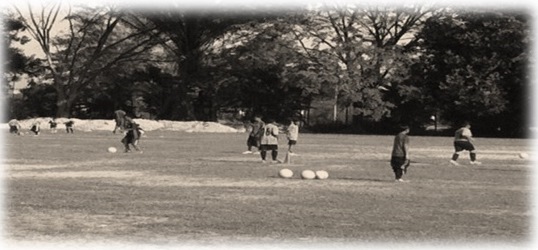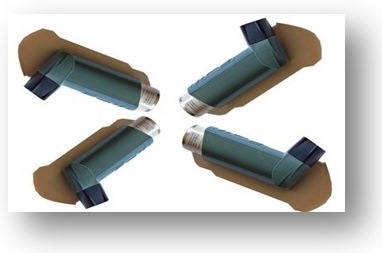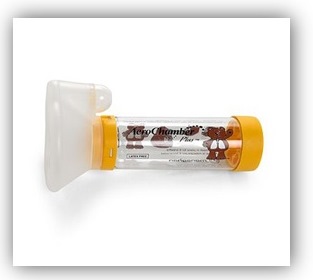Asthma and exercise
Like it sounds, exercise-induced asthma is asthma that is triggered by vigorous or prolonged exercise or physical exertion. Most people with chronic asthma experience symptoms of asthma during exercise. However, there are many people without chronic asthma who develop symptoms only during exercise.
Treatment
Physical exercise and daily recreation are very important for the growth and development of asthmatic children. One of the major goals in the treatment of asthmatic children is to help patients master EIA. EIA isa complex pathophysiological phenomenon, and therapeutic responses are difficult to predict. Normal or better-than-normal lung function (i.e., in trained athletes) does not guarantee the absence of severe EIA. Weather conditions, air quality, personal fitness, physical effort, the duration of symptoms and the underlying bronchial hyper reactivity all influence the development of EIA.

Non – pharmacologic Treatment
The first step of non -pharmacologic treatment of EIA involves :
- Advising the patient about the types of exercise that are least likely to induce an asthma attack, such as swimming, intermittent exercise, team games and exercise in warm and humid air.
- Thus, patients should try to avoid exercising in cold weather or on high-pollen days, which could worsen their condition.
- When patients are at rest, inspired air is warm and humidified, particularly in the nose and trachea. As the rate of ventilation increases, air is conditioned predominantly in the intrathoracic airways.
- During exercise in cold environments, breathing through the nose rather than the mouth, or wearing a mask, reduces the loss of heat and moisture and has been shown to minimize EIA.
- Symptoms of EIA usually occur after a few minutes of exercise, and some patients find that warm-up activities prevent significant episodes of EIA. It has been shown that between 40% and 50% of asthmatic patients experience refractory periods. Although the effects of warming up are variable, some patients can be refractory to an exercise task performed within 2 hours of a warm-up activity. For this reason, prolonged warm-up activities that include brief periods of intense activity are beneficial for subjects with EIA.
- A gradual cooling-off period rather than sudden cessation of exercise reduces the rate of re-warming in airways and protects against bronchospasm. Recently, regular exercise training was reported to decrease BHR in children with asthma, which may be due to its anti-inflammatory effect, suggesting that it may exert beneficial effects on EIA.
Handy Checklist
- Use a short-acting inhaler, 15 minutes prior to exercise. This will help ease asthma exacerbations and lasts between four to six hours.
- Warm-up for six to ten minutes before beginning a full exercise program.
- Breath through nose during exercise.
- Stop exercising if symptoms arise.
- Cool down at the end of your exercise.
Pharmacologic Treatment
- Medications Used to Treat EIA – Acute Control
- Short Acting Beta2 agonists

- How to give : By inhaler, frequently with a spacer, used shortly before exercise (or as close to exercise as possible).
Effects :Rapidly relieve bronchospasm, may be helpful for 2 to 3 hours.
Side -Effects :Tremors, nervousness, rapid heart beat.
- Short Acting Beta2 agonists
- Medications for Long Term Control
- Inhaled corticosteroids

- How to give :By inhaler, daily.
Effects :No rapid action; work long-term to relieve inflammation.
Side- Effects : Sore throat, yeast infections in the mouth or esophagus. - Leukotriene inhibitors
- How to give : By tablet, once a day.
Effects: No rapid action; work long-term to relieve inflammation.
Side -Effects: May not work for all patients.
- Inhaled corticosteroids
If you experience symptoms of exercise induced asthma during activity, You should :
- Stop exercising
- Follow your asthma action plan. If you do not have a plan, take four puffs of your reliever medication (such as Asthalin, or Ventolin). This medication should be taken one puff at a time via a spacer with six breaths taken from the spacer after each puff of medication (ten breaths for each puff for children below two years old).
- Only resume to exercise or activity if you are free of symptoms.
- If the symptoms don’t go away, or if they recur while you’re exercising, use your reliever as before. Do not return to any exercise or activity for the rest of the day and see your doctor.
A ‘spacer’ is a special device shaped like a clear plastic tube through which aerosol inhaler (not dry powder inhaler) medications are inhaled. Medication must come in a metered dose inhaler (puffer) to be used with a spacer.

| Last Reviewed | : | 27 January 2014 |
| Writer | : | Dr. Noor Hafiza Noordin |







